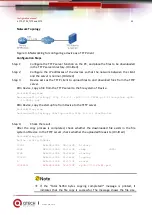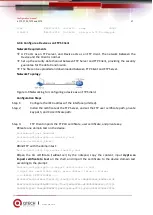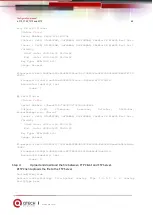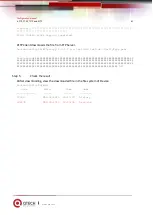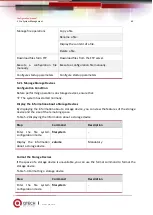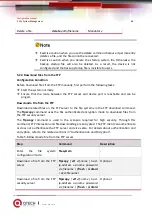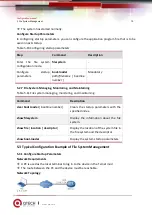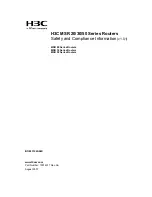
Configuration manual
5. File System Management
62
www.qtech.ru
5
FILE SYSTEM MANAGEMENT
5.1
Overview
The following lists the storage medium of the device and their functions:
SDRAM: Synchronous Dynamic Random Access Memory (SDRAM) provides the space for
executing application programs of the device.
FLASH: Stores application programs, configuration files, and the BootROM programs, and
so on.
EEPROM: Electrically Erasable and Programmable Read-Only Memory (EEPROM) stores
system configuration files and user information which is frequently changed.
USB: Stores the user data.
The device manages the following types of files:
BootROM files: Store basic data for system initialization.
Device application programs: Implement tasks such as route forwarding, file management,
and system management.
Configuration files: Store the system parameters that are configured by the users.
Log files: Store system log information.
The system has constructed one or more DOS-based file systems to store information which is
rarely modified, including device application programs (protocol software and drivers) and
BootROM. The file systems are called True Flash File Systems (TFFSs).
5.2
File System Management Function Configuration
Table 5-1 File system management function list
Configuration Tasks
Manage storage devices
Display the information about a storage device.
Format a storage device.
Remove a storage device.
Manage file directories
Display the information about a file directory.
Display the current working path.
Change the current working path.
Create a directory.
Delete a directory.






